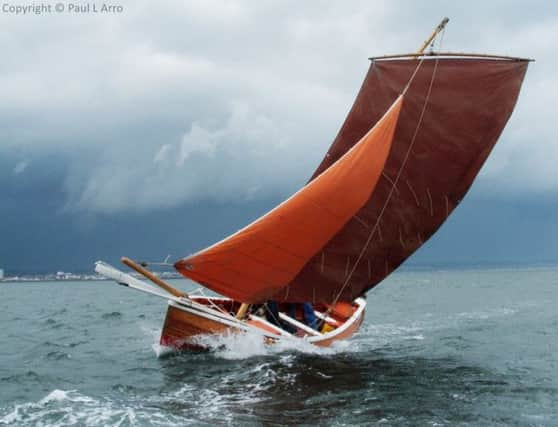Cobles set sail for a journey to the past


The Madeleine Isabella, built for John Robert Handyside, of Beadnell, in 1912, is one of nine sailing cobles featured in the first Bridlington Sailing Coble Festival next month.
The festival, on August 13 and 14, will probably be the largest gathering of these traditional vessels in the British Isles in recent years.
Advertisement
Hide AdAdvertisement
Hide AdThe Beadnell coble began life as the Ann Isabella. Hector Handyside, the grandson of the original owner and a master coble builder in his own right, who spent his working life with the Amble boat building firm of J & J Harrison, took on the project of completely restoring her after she was brought back to Amble from Teesmouth, in 1985.
Then named Nis Desperandum by previous owners, she was in a poor state of repair but Hector rebuilt her virtually piece by piece.
Once restored, the coble was sold to Steve Emmerson, of Flamborough, and he gave her the name Madeleine Isabella, a combination of her old name and that of his daughter.
Two other sailing cobles built by Hector Handyside, Christina and Gratitude, will also be at the festival, organised jointly by the Bridlington Sailing Coble Preservation Society and The Coble and Keelboat Society.
Advertisement
Hide AdAdvertisement
Hide AdThe festival will bring to life days long gone when every port and village along the north-east coast from the Humber to the Tweed had fleets of sailing cobles.
Once the mainstay of the inshore fishing industry, certainly until the introduction of motor power just after the First World War, the versatile coble was also used for piloting and foying (plying for hire).
Weather permitting, sailing will take place between 11am and 4pm on both days of the festival. When not sailing, the cobles will be moored near the Harbour Heritage Museum on Harbour Road.
It is hoped that two traditional Northumberland motor cobles will make the passage to Bridlington.